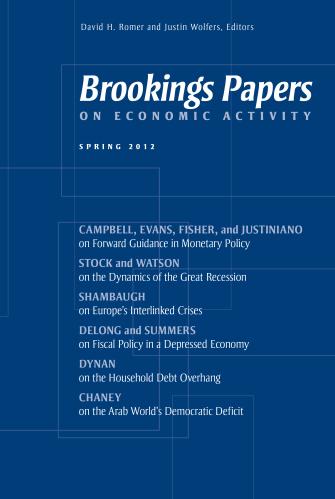Studies in this week’s Hutchins Roundup find that cuts to the supply of credit decrease productivity growth, imposing fiduciary duty on financial advisors shifts sales toward products with lower fees, and more.
Want to receive the Hutchins Roundup as an email? Sign up here to get it in your inbox every Thursday.
Credit supply cuts decrease productivity growth
Analyzing data on Italian firms and their banks from 1997 to 2013, Francesco Manaresi and Nicola Pierri of the International Monetary Fund find that a contraction in credit supply can decrease productivity growth. The authors identify credit supply shocks by comparing firms in the same industry and region that borrow from different banks, some of which contracted overall lending and some of which didn’t. They find that a 1 percentage point decline in credit supply decreases a firm’s total factor productivity growth by between 0.02 and 0.1 percentage point, and that credit supply contraction can account for between 12.5% to 30% of the decline in overall Italian TFP during the financial crisis. The authors show that decreases in credit supply negatively affect the degree to which a firm exports, adopts new investment in information technology, and uses superior management practices, all of which can affect TFP.
Imposing fiduciary duty on financial advisors shifts sales toward products with lower fees
Registered investment advisors are obligated by federal regulations to act in the best interest of their clients (fiduciary duty), but those licensed as broker-dealers, who are often paid on commission, are not. Using transaction-level data on annuity sales from a large company between 2008 and 2015, Vivek Bhattacharya and Gaston Illanes of Northwestern University and Manisha Padi of the University of Chicago compare states with different fiduciary duty laws. They find that imposing fiduciary duty on broker-dealers changes the composition of the products purchased by their clients. The share of sales that are variable annuities—often a high-fee product—falls by about 9 percentage points, and, within variable annuities, the share of lower-fee, higher-return annuities with a wider array of investment options rises.
Usual statistics understate unemployment and labor-force participation and overstate duration of unemployment
Survey data can have inconsistencies because respondents may not provide accurate answers, and those who do not respond may not resemble the entire population. Hie Joo Ahn of the Federal Reserve Board and James Hamilton of the University of California, San Diego, adjust data from the Current Population Survey—the primary source of U.S. labor force statistics—between 2001 and 2018 to reconcile its numerous inconsistencies. They find that that non-respondents are more likely than the general population to be unemployed, and that the bias due to non-respondents has increased since the Great Recession. Usual statistics understate the unemployment rate and the labor-force participation rate by about two percentage points on average, they find, and the conventionally-reported unemployment duration overstates by 50% the true duration. True unemployment durations did not rise as much during the Great Recession, and subsequently recovered to pre-recession levels, they say.
Chart of the week: Smaller and non-metropolitan areas saw a population rebound
*Before the Great Recession, smaller metro areas were growing faster than those with populations over 500,000, and non-metro area growth was on the upswing. The recession put the brakes on population dispersal. Recently, as the economy recovered, growth rates in big metro areas have declined and non-metro areas have gained population after six years of losses.

Quote of the week:
“First, business debt is near record levels, and recent issuance has been concentrated in the riskiest segments. As a result, some businesses may come under severe financial strain if the economy deteriorates. A highly leveraged business sector could amplify any economic downturn as companies are forced to lay off workers and cut back on investments. Investors, financial institutions, and regulators need to focus on this risk today, while times are good,” said Jerome Powell, chair of the Federal Reserve.
“Second, today business debt does not appear to present notable risks to financial stability. The debt-to-GDP ratio has moved up at a steady pace, in line with previous expansions and neither fueled by nor fueling an asset bubble. Moreover, banks and other financial institutions have sizable loss-absorbing buffers. The growth in business debt does not rely on short-term funding, and overall funding risk in the financial system is moderate. Third, we cannot be satisfied with our current level of knowledge about these markets, particularly the vulnerability of financial institutions to potential losses and the possible strains on market liquidity and prices should investors exit investment vehicles holding leveraged loans.”









Commentary
Hutchins Roundup: Credit supply and productivity growth, fiduciary duty, and more
May 23, 2019